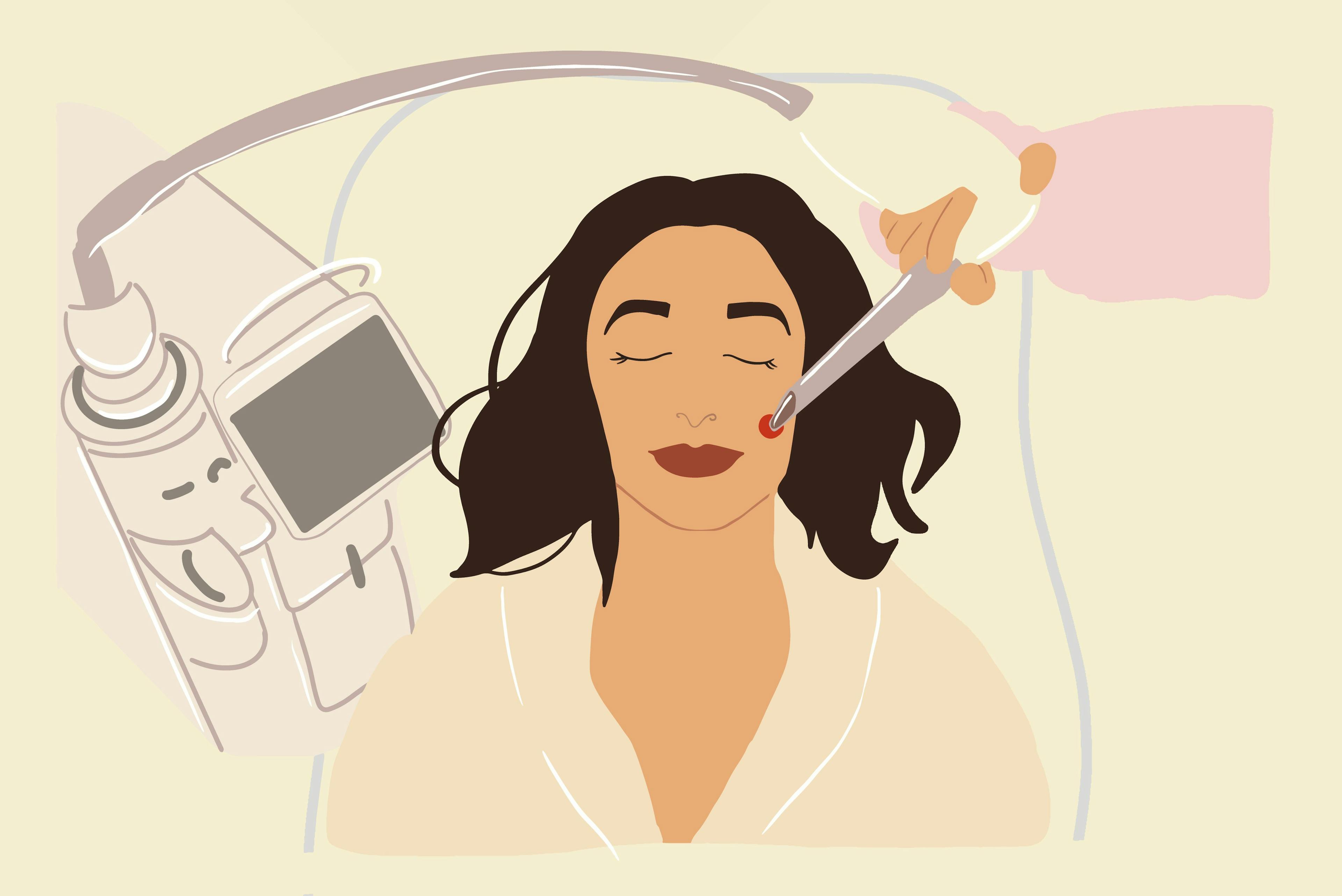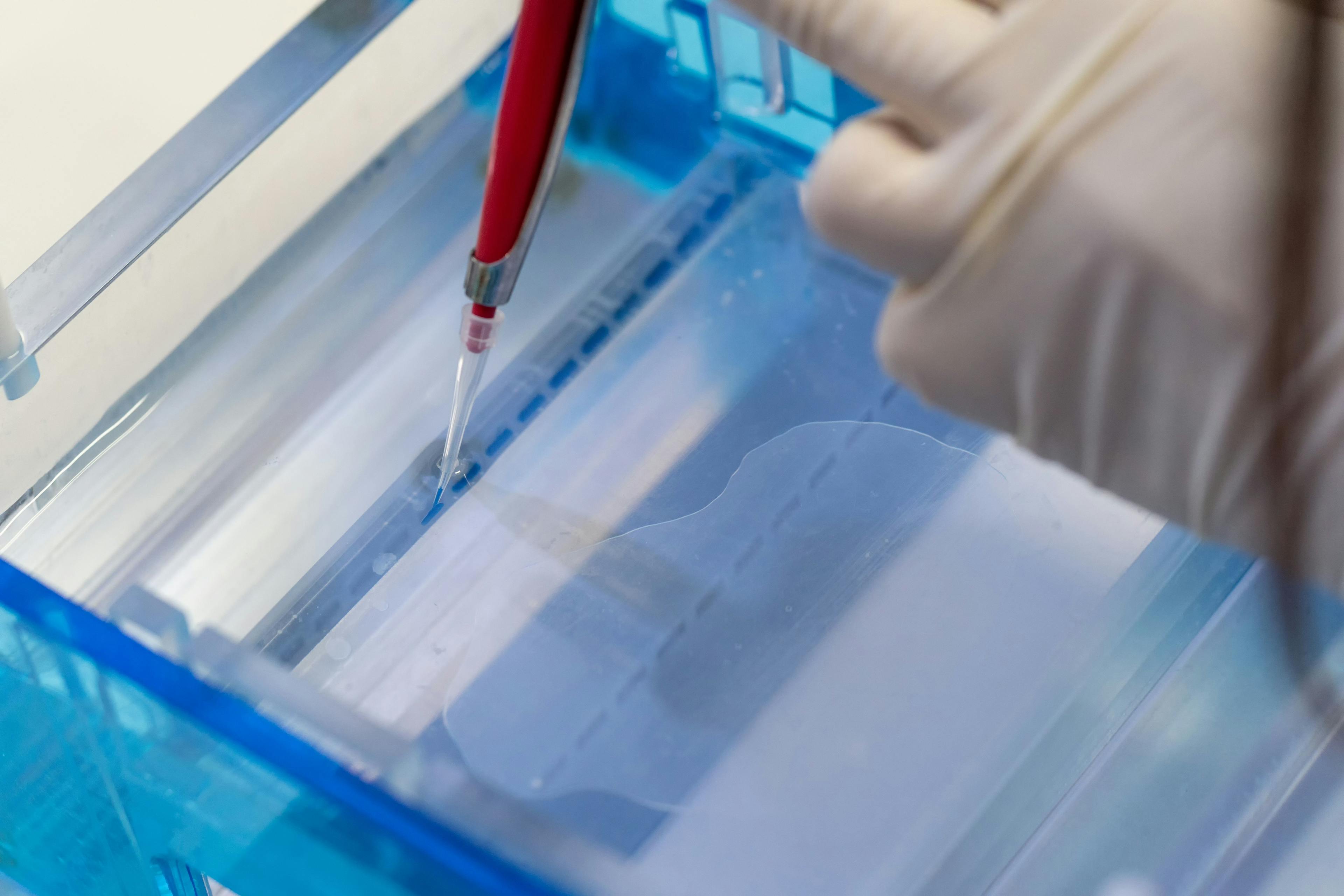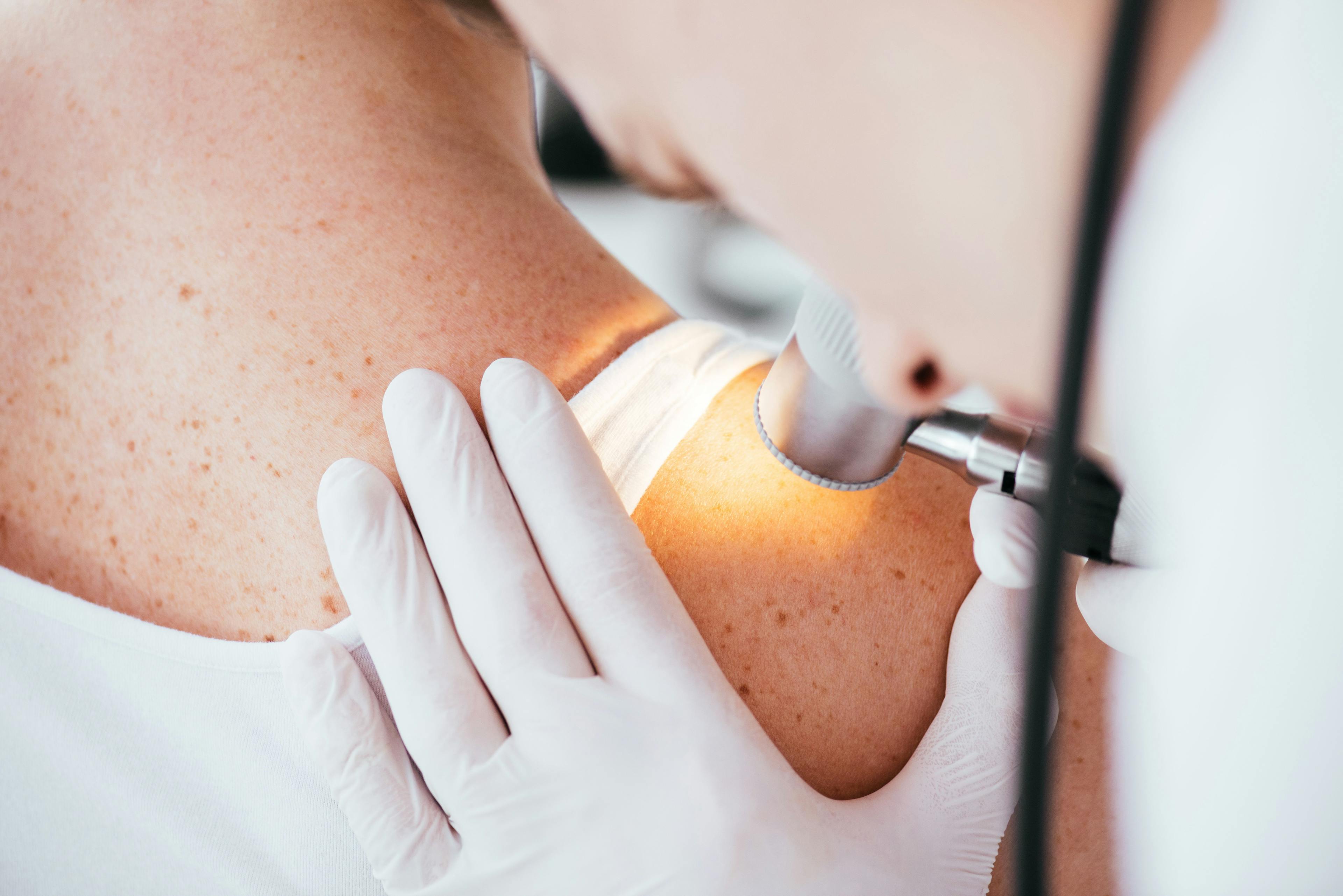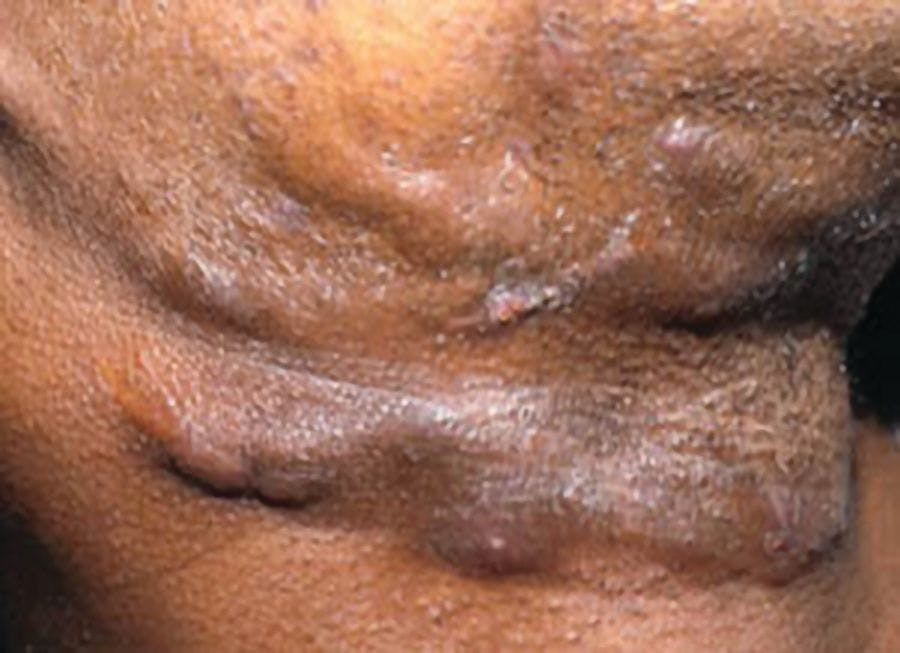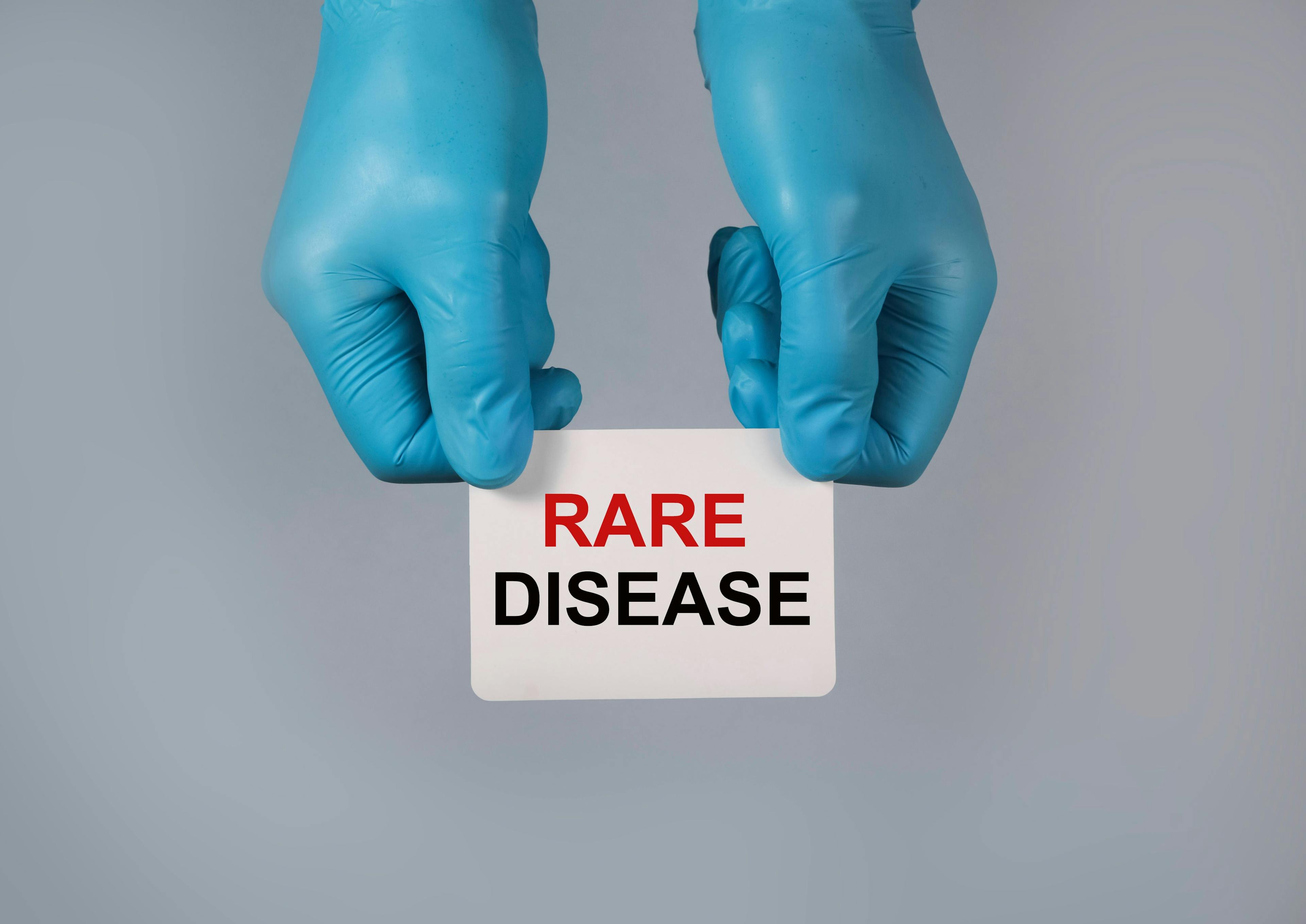- Acne
- Actinic Keratosis
- Aesthetics
- Alopecia
- Atopic Dermatitis
- Buy-and-Bill
- COVID-19
- Case-Based Roundtable
- Chronic Hand Eczema
- Drug Watch
- Eczema
- General Dermatology
- Hidradenitis Suppurativa
- Melasma
- NP and PA
- Pediatric Dermatology
- Pigmentary Disorders
- Practice Management
- Precision Medicine and Biologics
- Prurigo Nodularis
- Psoriasis
- Psoriatic Arthritis
- Rare Disease
- Rosacea
- Skin Cancer
- Vitiligo
- Wound Care
Publication
Article
Dermatology Times
Genetic Profiling and the Future of Therapeutics in Dermatology
Author(s):
Recent, continued research in genetic profiling has made personalized medicine more of a reality and brought the concept a step closer to potential regular use in general dermatology practice.
The precise etiology of myriad dermatologic diseases and conditions remains unknown; however, all share inflammation as a causative factor. A recent study1 identified how precision medicine and genetic profiling can be used to better target inflammatory skin disease and help clinicians optimally decide on treatments.
Precision medicine is a cutting-edge approach in which clinicians can tailor treatments to a subpopulation of patients who have a common susceptibility to a particular disease or similar response to a particular drug. Continued research in genetic profiling has fueled therapy development for a number of both common and rare dermatologic diseases including psoriasis vulgaris, atopic dermatitis, and other clinical and histopathologically nondescript rashes.
“We are in a time now where the number of therapeutic medications for dermatology is really exploding in the immunomodulatory area. Similar to other diseases, rashes arise from a wide spectrum of genetic pathology and as such do not always fall in neat categories. The aim is to be able to more precisely identify the molecular pathology of a given rash and match it to specific medications. In our research, we are ultimately trying to get a very personalized portrait of a given patient’s inflammatory disease so we can get them the right medication,” said Raymond J. Cho, MD, PhD, associate professor, dermatology, University of California, San Francisco (UCSF), California, and senior coauthor of the study along with Jeffrey B. Cheng, MD, PhD, also at UCSF.
Single-cell ribonucleic acid sequencing has helped increase the precision for investigators looking at the details of the complex mixture of the immune and stromal cell role in inflammatory skin diseases Cho said, helping them focus on more targeted treatment regimens for their patients.
In his recent study, Cho and fellow researchers single-cell–profiled CD45+ immune cell transcriptomes from skin biopsies taken from 31 patients (7 atopic dermatitis, 8 psoriasis vulgaris, 2 lichen planus, 1 bullous pemphigoid, 6 clinical and histopathologically indeterminate rashes, and 7 healthy controls).
Results showed active proliferation expansion of the Treg (regulatory T-cell) and Trm (resident-memory T cell) components and universal T-cell exhaustion in human rashes, with a relative attenuation of antigen-presenting cells. In addition, the skin resident memory T cells showed the greatest transcriptional dysregulation in both atopic dermatitis and psoriasis, whereas atopic dermatitis also demonstrated recurrent abnormalities in ILC [KK1] and CD8+ cytotoxic lymphocytes. The transcript signatures differentiating these rash types included genes previously implicated in T helper cell (TH2)/TH17 diatheses, segregated in unbiased functional networks, and accurately identified disease class in untrained validation data sets. These gene signatures were able to classify clinicopathologically ambiguous rashes with diagnoses consistent with therapeutic response.
According to Cho, the study results describe how advanced molecular profiling can be used to distinguish different inflammatory skin diseases, including common diseases such as psoriasis and atopic dermatitis, and also to better diagnose rarer and much more difficult cases.
“A finer analysis of immune cell populations may reveal new cell-type–specific differences in gene activity between inflamed and healthy skin, or between different classes of skin disease. In our study, we were able to define major classes of human inflammatory skin disease at the molecular level and described a quantitative method to classify indeterminate instances of pathologic inflammation,” Cho said.
In the future, for those patients who do not fall in a very neat category in an obvious way, Cho said a biopsy or other means of molecular testing could be performed to help clinicians better understand what makes them genetically activated in their immune system. Regardless of the clarity of classification, all patients could eventually be profiled to possibly be able to help in predicting drug response.
“We want to take unusual cases and classify them for therapeutics—patients who don’t sit right in the middle of an obvious category, probably about 10% of patients. Then eventually we’d want to predict treatment success for the remaining 90% of patients,” Cho said.
Psoriasis and atopic dermatitis are common and often challenging-to-treat skin diseases, sometimes requiring multiple therapeutic approaches to optimally manage patients. Affecting over 7.5 million people in the United States, even mild cases of psoriasis may trigger inflammatory processes that could lead to serious comorbidities such as disabling arthritis as well as the full gamut of metabolic syndrome. Impacting approximately 26 million people in the United States, atopic dermatitis can cause relentless itching resulting in excoriations, skin oozing and cracking, and insomnia in severe cases.
Both diseases are inflammatory but according to Cho, research has shown how distinct biochemical pathways trigger inflammation in the 2 conditions, leading to new biologic treatments specifically targeting different inflammatory pathways and immune cytokine molecules. However, the conditions cannot always be easily distinguished based on the knowledge of symptoms or clinical examination, or even with the help of tissue analysis, Cho said, challenging even well-trained and experienced dermatologists, leading to misdiagnosis and inappropriate treatment.
Of the spectrum of dermatologic diseases, Cho believes the 2 areas where the benefit of genetic profiling can be currently felt most include more genetically heterogenous diseases such as atopic dermatitis and rashes that do not easily fit in a specific clinical category. Some rashes may appear to have the clinical aspects of both eczema and psoriasis and, according to Cho, about 10% of the rashes seen by clinicians may not comfortably fit in a set category.
On the journey to bring genetic testing and personalized medicine more mainstream in the dermatology practice, researchers need to identify very high-resolution molecular markers and try to understand how they affect clinical parameters such as prognosis and drug response.
“Right now, the work to identify the most high-resolution markers is very painstaking and we have to look very specifically at T cells and antigen-producing cells to see some of the defects that will correlate with disease progression and response. Currently, there isn’t a set of markers that is good enough that can be used across a variety of diseases,” Cho said.
In order to help clinicians better categorize challenging and more ambiguous cases, Cho and his colleagues created a proof-of-principle online web interface tool called RashX. The system is designed to give the global clinical research community the opportunity to enter and match genetic information about their challenging rash patients against those in the system’s database, which are linked to specific skin diagnoses, and hopefully learn more of the genetic pathology of individual frustrating cases.
According to Cho, the publicly available framework of RashX allows scientists and clinicians worldwide to analyze and contribute their own patient-level data, leading to more accurate classification, diagnosis, and treatment of challenging cases.
“If you have a patient with a very strange clinical presentation and you may not understand the inflammatory genesis, reach out to us because we would love to consult with you on such cases. For very unusual cases, we just may learn something new about how these unusual rashes develop,” Cho said.
Disclosures: None relevant
Reference
1. Liu, Y, Wang H, Taylor M, Cook C, et al. Classification of human chronic inflammatory skin disease based on single-cell immune profiling. Sci Immunol.2022;7(70):eabl9165. doi:10.1126/sciimmunol.abl9165

Newsletter
Like what you’re reading? Subscribe to Dermatology Times for weekly updates on therapies, innovations, and real-world practice tips.

